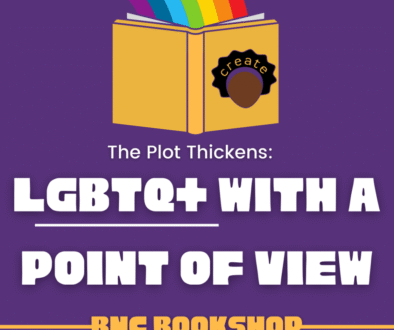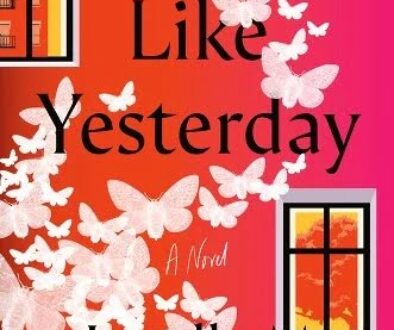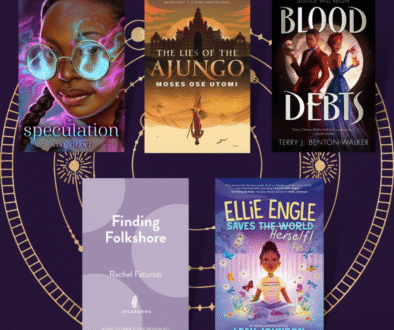The Plot Thickens: How Two New Releases Confront White Supremacy
Challenging white supremacy through widely released fictional works is not a new concept, Ralph Ellison’s Invisible Man was published by one of the Big Four publishers after all, and it is a 2017 breakout release, Get Out, that has inspired the two books I will explore in this post. White supremacy is a grasping, far-reaching, and horrifying reality that binds itself to us through early enforcement at school and gains institutional weight as we grow into working adults. Ace of Spades by Faridah Àbíké-Íyímídé and The Other Black Girl by Zakiya Dalila Harris, both released yesterday, use the strength of the thriller genre to confront white supremacy as it occurs at a fictional boarding school and in the publishing industry.

In Ace of Spades we confront the Ivy League feeder school reality of Niveus Private Academy, a boarding school in an undisclosed city within the United States, through the eyes of two of the school’s few Black students, Chiamaka and Devon. A child of two doctors, one of whom comes from a wealthy Italian family, Chiamaka has been raised to find her place in elitist, predominantly white spaces. At the beginning of the book, her reputation as one of the school’s social battle-hardened over-achieving popular girls would lead you to believe that she has successfully navigated her way to the top by her senior year. In a matter of a few chapters, you find that reputation, no matter how jealously guarded, means very little when you lack support—a lesson Chiamaka stumbles through. In fact, much of the book is spent watching Chiamaka realize that she is not confronting a new reality but finally seeing the world as it has always been. On the other hand, her co-protagonist Devon has never led a charmed life. Though also in his senior year at Niveus, Devon relies on the school’s scholarship program to fund his education and his college dreams are built on the hours he’s put into composing the perfect piece for submission to Juilliard, his first choice. He and Chiamaka are forced to work together in order unravel why they have been targeted by the vindictive Aces, who outs him to the school while he is still closeted at home. It is their contrast—Chiamaka’s entitlement and confidence leading them into various strategies and actions and Devon’s more cautious and realist worldview—which allows them to uncover a heinous, decades-old white supremacist secret.

The earliest chapters of The Other Black Girl lay the microaggressive and blatantly harmful effects of white supremacy in liberal spaces bare from the beginning. Nella Rogers is a Black twenty-something editorial assistant for a well-renowned literary agency in New York City. She has dreamt of working at Wagner since idolizing the editor-author duo of Kendra Rae Phillips and Diana Gordon—two Black women who had achieved the impossible by topping the bestseller charts in the 1980s. Working there for over two years, Nella has found herself in the uncertain career rut faced by many a millennial. Where are the opportunities to move up? When will her supervisor give her greater responsibilities, providing her a pathway to promotion? How many post-office hours socializing must she do in order to prove herself to the right people? Is her time better served trying to impress her supervisor or being seen by more senior staff members? All of this inner turmoil is exacerbated by the everyday concerns she carries as a Black woman in a predominantly white workspace. How can she be sure if some of the suggestions that she’s made about racial justice improvements for Wagner has actually been well-received or has put a target on her back? Presumably, this is answered in the lack of continued town halls and the rejection of her suggestions to reach out to a prominent Black racial justice advocate for a book proposal. Surely, these are just inconveniences that can be rectified when the right leaders are in place at Wagner, ones who will push these considerations to their rightful place in the company’s priorities? Toiling away with these burning desires, Nella’s primary outlet for these concerns is her best friend Malaika, who works in a different industry but is always down for a happy hour chat about their shared issues. So of course Nella is overjoyed when another Black girl, one her age, joins the Wagner team. Two Black women on staff at the same time, what a feat! Though the new girl, Hazel, holds the same position of editorial assistant, it is not very long before she ushers in a lot of changes that move forward a lot of the racial justice initiatives that Nella missed at the company while also making some regressive steps. Nella’s interrogation of this dynamic leads her down some personal and professional revelations of her own—some that have deeper implications and may even answer one of the publishing world’s longstanding mysteries: what happened to Kendra Rae Phillips?
Though I am not typically a thriller reader, I always love untangling a good mystery, something both of these books offer in spades. When I understood that both stories examined white supremacy through this genre lens, I knew a discussion about the strengths of the two were warranted. What stood out to me most when reading these stories was the impact that Get Out has already had on the ways Black creators interpret and explain their own battles with white supremacy to larger audiences. Ace of Spades builds on the tension and disbelief of even the white people whom we’ve built seemingly strong relationships with becoming our own tormentors. Faridah Àbíké-Íyímídé does a laudable job in building in misdirects about who to trust or mistrust and when, drawing upon all that society has been taught to trust—authority and institutional pragmatism—and putting it under scrutiny. Zakiya Dalila Harris’ novel, The Other Black Girl, draws us in with the story of another Black woman occupying the same space during another time—much like the opening scene of Get Out. From there the story plays with showing us the universality of being Black in these sorts of occupational spaces while also dropping us into the strange and unfamiliar, without quite sticking the landing. While Ace of Spades ends on a triumphant note, The Other Black Girl stumbles into a territory that seems to undermine the opening questions of the book by seeking the approval of the white gaze.
I think both books are worth reading for any Get Out fan wondering at its legacy across mediums. Ace of Spades is a good study of why even Black people with the privilege of youthful optimism, capital, and legacy institutions are never safe—why Black folk have to remain constantly vigilant. The Other Black Girl is great for validating many of the concerns that college-educated Black people have even after we’ve achieved this first major goal post and why we must have support from others in this position to move forward. Like Get Out, after reading each book, I could faintly hear the refrain of Childish Gambino’s “Redbone.” How’s that for legacy?



